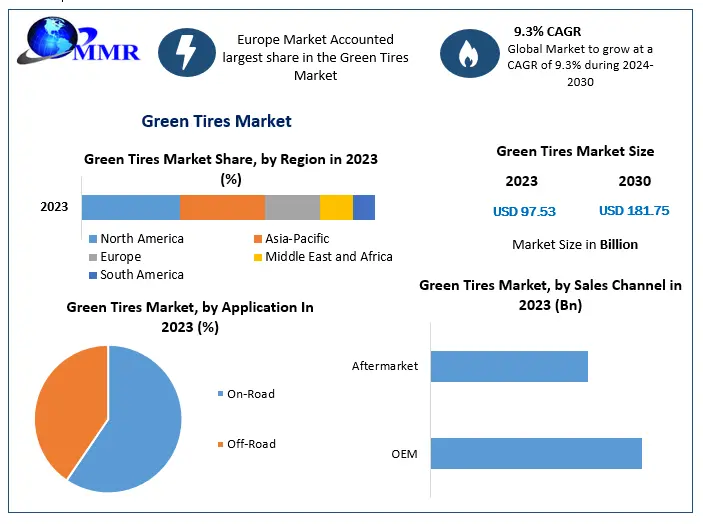LONELINESS-
The New Psychology of Belonging.
Belonging isn’t just a need, but a right.
Reviewed by Devon Frye
This year marks 80 years since Abraham Maslow published his “Theory of Human Motivation" in Psychological Review. The article reshaped psychology—as well as fields like education, social work, and management—laying out a radically new classification system to map out both the basic needs and higher aspirations of human beings.
The 1943 article was also historic for a lesser-known reason. It emphasized a fundamental idea that hadn’t been explicitly studied in psychology up to that point: belonging. Maslow placed “belongingness”—what he described as the human need for interpersonal connection and acceptance— in a prime position in his hierarchy, just after the needs for food, clothing, shelter, and physical safety. At a time when psychology was primarily concerned with “mental chemistry” and scientific models of pathology, this was a radical proposition.
It was also prescient. Today, in an age of isolation—with increasing rates of loneliness, alienation, and polarization—there’s growing recognition that belonging matters not just for our emotional well-being but also for our physical health, the health of our social discourse, and even our economic systems. Belonging is now a central focus in psychology, and diversity, equity, inclusion, and belonging (DEIB) consulting is now a multibillion-dollar industry.
Looking back at the article 80 years later, it’s clear that Maslow opened an essential conversation. Yet there’s also a case to be made that he didn’t take belonging seriously enough.
Over the past several years, I've interviewed more than 150 experts, movement leaders, and other people with direct lived experience to better understand the meaning of belonging. Over time, I’ve come to understand the meaning of belonging as something broader than how Maslow conceived it.
Belonging isn’t just a connection to other people, but also to place, power, and purpose. The experience of belonging is about connectedness through community, as well as rootedness in a place, a feeling of ownership in shared outcomes, and a sense of mission with others.
Belonging—in this broader sense—isn’t just, as Maslow posited, a human need. It’s a fundamental right. It’s a principle from which all other needs flow. This is to say that belonging—our connectedness to humanity, nature, and meaning—is what animates us to seek food, clothing, shelter, and all the necessities of human survival in the first place.
It's understandable that Maslow had a more limited conception of belonging because his research focused squarely on Western industrialized populations and history. Over the decades, his work has been criticized for a focus on individual growth over the realization of communal needs.
In contrast, Indigenous traditions around the world have emphasized broader conceptions of belonging since time immemorial. For the Nuu-chah-nulth peoples of the Pacific Northwest, for example, the organizing principle of the interconnectedness of human beings—as well as the natural world—is encapsulated in the organizing principle of Tsawalk, meaning “one.” Belonging is a fundamental birthright.
In researching my new book, I spoke with Albert Marshall, an Elder from the Moose Clan of the Mi’kmaq Nation in Canada, about how his people have survived for more than 18,000 years, maintaining balance with the world around them. The key to this achievement, he says, is “when they act and work together as a group.” He offers a metaphor for what makes long-term survival possible: “If you look under the trees, you’ll see all these roots. What are the roots doing? They’re holding hands. They’re supporting each other.”
Of course, this vision of belonging as humanity’s fundamental birthright is present in the roots of Western societies, too. In Aristotle’s "Nicomachean Ethics," the Greek philosopher emphasizes that our social connection is an essential precondition for thriving. In the medieval myth of the Grail Quest, the hero, Parzival, ultimately achieves his mission and transforms a wasteland by learning to place the value of compassion over social conventions or individual glory.
To understand the meaning of belonging and how we cultivate it in the modern world, I’ve found that we also need to understand its antithesis—isolation.
Two decades ago, I got to attend a dinner in New York City, held in honor of Nelson Mandela and his wife, Graça Machel. It was my first time meeting Mandela—and I naturally felt both joy and jitters. I had met Graça before. Despite her accomplishments and fame, I felt an intimate connection with her. When I arrived, she greeted me warmly and asked me how I had been since losing my father. I told her how the worst heartache hadn’t been my father’s disability, but the isolation that accompanied his struggle.
Mandela, who had spent almost three decades in prison, with long periods in solitary confinement, watched quietly as I shared these reflections. I turned to him and said, “Of course, you would know all about isolation.”
He paused to think, then answered solemnly, “No, I have never been isolated.”
“Not even on Robben Island?” I asked, referring to the notorious prison camp on a rock in the Indian Ocean, where he was interned for more than a decade.
“No,” he replied.
“On Robben Island, we were all brothers working together with a common purpose. I was never alone.” He continued, “I have seen isolation. I have seen it in the child with AIDS whom no one in the village will love or care for or touch or feed or shelter. I have seen isolation—and it is very bad.”
Here was a man who had been isolated in the starkest of conditions—and yet stayed connected with his community through a shared sense of purpose. Each day, he and his brothers served the cause of his people’s freedom, understanding their personal struggles as a microcosm of their wider struggle. They built a powerful sense of solidarity and belonging that endured the harsh conditions of prison.
Mandela never lost sight of the traditions that gave him a strong sense of his place in the world, the love of his homeland, or the wisdom transmitted to him from his elders. He drew from these foundations as he developed a sense of how to emerge from prison undiminished, and how to conserve and replenish his beliefs. His reflections on the child with HIV indicated that there was more to isolation and belonging than personal psychology—there were broader, structural factors at play.
While Abraham Maslow described belonging in terms of friendship, intimacy, family, and connection, Mandela’s experience helped me understand that isolation and belonging are wider and more nuanced than we commonly think. Belonging is a principle that gets to the essence of what makes us human.
In this new Psychology Today series, I’ll be exploring the questions of what it means to belong and how we can cultivate belonging today. I’ll share stories from academic researchers, political leaders, refugees, Indigenous wisdom-keepers, movement-builders, and people with experience on the frontlines of crises around the world—stories that illustrate how we can overcome crises of isolation and othering.
Eight decades after Maslow elevated belonging to a central place in psychology, his core proposition remains true. Belonging is a human need. Yet the new psychology shows that it’s also something more. It’s a birthright. It’s a value that defines us human beings and a deeply-felt principle that points the way to solving diverse problems facing individuals, communities, and whole societies today. While this insight might seem new, it is, in fact, as ancient as humanity itself.
Read more
LONELINESS-
The New Psychology of Belonging.
Belonging isn’t just a need, but a right.
Reviewed by Devon Frye
This year marks 80 years since Abraham Maslow published his “Theory of Human Motivation" in Psychological Review. The article reshaped psychology—as well as fields like education, social work, and management—laying out a radically new classification system to map out both the basic needs and higher aspirations of human beings.
The 1943 article was also historic for a lesser-known reason. It emphasized a fundamental idea that hadn’t been explicitly studied in psychology up to that point: belonging. Maslow placed “belongingness”—what he described as the human need for interpersonal connection and acceptance— in a prime position in his hierarchy, just after the needs for food, clothing, shelter, and physical safety. At a time when psychology was primarily concerned with “mental chemistry” and scientific models of pathology, this was a radical proposition.
It was also prescient. Today, in an age of isolation—with increasing rates of loneliness, alienation, and polarization—there’s growing recognition that belonging matters not just for our emotional well-being but also for our physical health, the health of our social discourse, and even our economic systems. Belonging is now a central focus in psychology, and diversity, equity, inclusion, and belonging (DEIB) consulting is now a multibillion-dollar industry.
Looking back at the article 80 years later, it’s clear that Maslow opened an essential conversation. Yet there’s also a case to be made that he didn’t take belonging seriously enough.
Over the past several years, I've interviewed more than 150 experts, movement leaders, and other people with direct lived experience to better understand the meaning of belonging. Over time, I’ve come to understand the meaning of belonging as something broader than how Maslow conceived it.
Belonging isn’t just a connection to other people, but also to place, power, and purpose. The experience of belonging is about connectedness through community, as well as rootedness in a place, a feeling of ownership in shared outcomes, and a sense of mission with others.
Belonging—in this broader sense—isn’t just, as Maslow posited, a human need. It’s a fundamental right. It’s a principle from which all other needs flow. This is to say that belonging—our connectedness to humanity, nature, and meaning—is what animates us to seek food, clothing, shelter, and all the necessities of human survival in the first place.
It's understandable that Maslow had a more limited conception of belonging because his research focused squarely on Western industrialized populations and history. Over the decades, his work has been criticized for a focus on individual growth over the realization of communal needs.
In contrast, Indigenous traditions around the world have emphasized broader conceptions of belonging since time immemorial. For the Nuu-chah-nulth peoples of the Pacific Northwest, for example, the organizing principle of the interconnectedness of human beings—as well as the natural world—is encapsulated in the organizing principle of Tsawalk, meaning “one.” Belonging is a fundamental birthright.
In researching my new book, I spoke with Albert Marshall, an Elder from the Moose Clan of the Mi’kmaq Nation in Canada, about how his people have survived for more than 18,000 years, maintaining balance with the world around them. The key to this achievement, he says, is “when they act and work together as a group.” He offers a metaphor for what makes long-term survival possible: “If you look under the trees, you’ll see all these roots. What are the roots doing? They’re holding hands. They’re supporting each other.”
Of course, this vision of belonging as humanity’s fundamental birthright is present in the roots of Western societies, too. In Aristotle’s "Nicomachean Ethics," the Greek philosopher emphasizes that our social connection is an essential precondition for thriving. In the medieval myth of the Grail Quest, the hero, Parzival, ultimately achieves his mission and transforms a wasteland by learning to place the value of compassion over social conventions or individual glory.
To understand the meaning of belonging and how we cultivate it in the modern world, I’ve found that we also need to understand its antithesis—isolation.
Two decades ago, I got to attend a dinner in New York City, held in honor of Nelson Mandela and his wife, Graça Machel. It was my first time meeting Mandela—and I naturally felt both joy and jitters. I had met Graça before. Despite her accomplishments and fame, I felt an intimate connection with her. When I arrived, she greeted me warmly and asked me how I had been since losing my father. I told her how the worst heartache hadn’t been my father’s disability, but the isolation that accompanied his struggle.
Mandela, who had spent almost three decades in prison, with long periods in solitary confinement, watched quietly as I shared these reflections. I turned to him and said, “Of course, you would know all about isolation.”
He paused to think, then answered solemnly, “No, I have never been isolated.”
“Not even on Robben Island?” I asked, referring to the notorious prison camp on a rock in the Indian Ocean, where he was interned for more than a decade.
“No,” he replied.
“On Robben Island, we were all brothers working together with a common purpose. I was never alone.” He continued, “I have seen isolation. I have seen it in the child with AIDS whom no one in the village will love or care for or touch or feed or shelter. I have seen isolation—and it is very bad.”
Here was a man who had been isolated in the starkest of conditions—and yet stayed connected with his community through a shared sense of purpose. Each day, he and his brothers served the cause of his people’s freedom, understanding their personal struggles as a microcosm of their wider struggle. They built a powerful sense of solidarity and belonging that endured the harsh conditions of prison.
Mandela never lost sight of the traditions that gave him a strong sense of his place in the world, the love of his homeland, or the wisdom transmitted to him from his elders. He drew from these foundations as he developed a sense of how to emerge from prison undiminished, and how to conserve and replenish his beliefs. His reflections on the child with HIV indicated that there was more to isolation and belonging than personal psychology—there were broader, structural factors at play.
While Abraham Maslow described belonging in terms of friendship, intimacy, family, and connection, Mandela’s experience helped me understand that isolation and belonging are wider and more nuanced than we commonly think. Belonging is a principle that gets to the essence of what makes us human.
In this new Psychology Today series, I’ll be exploring the questions of what it means to belong and how we can cultivate belonging today. I’ll share stories from academic researchers, political leaders, refugees, Indigenous wisdom-keepers, movement-builders, and people with experience on the frontlines of crises around the world—stories that illustrate how we can overcome crises of isolation and othering.
Eight decades after Maslow elevated belonging to a central place in psychology, his core proposition remains true. Belonging is a human need. Yet the new psychology shows that it’s also something more. It’s a birthright. It’s a value that defines us human beings and a deeply-felt principle that points the way to solving diverse problems facing individuals, communities, and whole societies today. While this insight might seem new, it is, in fact, as ancient as humanity itself.












